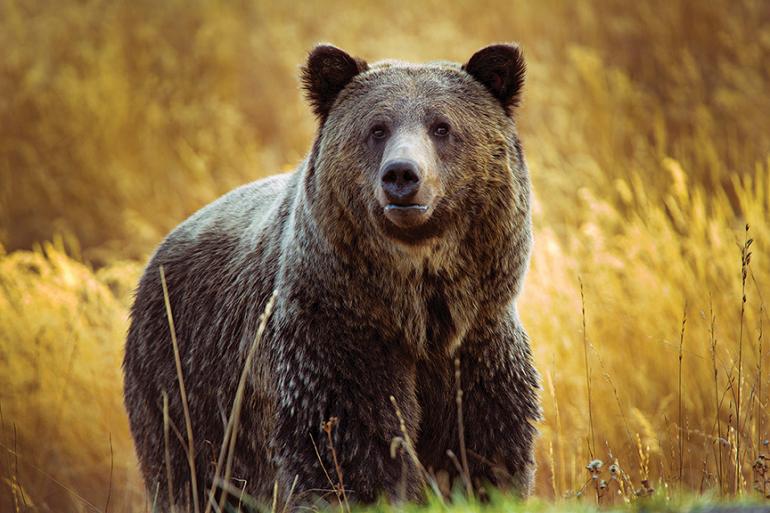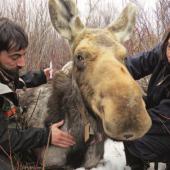When a Grizzly Kills
And what happens next.
Since being listed as an endangered species in 1974, the grizzly-bear population has grown to over 700 individuals and their geographic range has doubled. “Bears are spilling into areas without the same level of habitat suitability,” says Frank T. van Manen, a wildlife biologist with the USGS Northern Rocky Mountain Science Center. This less-desirable habitat happens to be closer to human population centers, which leads to a higher rate of grizzly-human conflict.
Conflict Bears
Obviously not all interactions end well. Unfortunately, Billings resident and Yellowstone National Park veteran Lance Crosby was involved in one of those conflicts last summer when he was killed and partially consumed by a grizzly near the Elephant Back Loop trail. As Yellowstone officials released its plan to euthanize the grizzly responsible, critics pleaded for preservation of the bear and her two cubs through relocation and rehabilitation. “We are trespassing into their home and they are protecting themselves” says Marc Bekoff, former professor of ecology and evolutionary biology at the University of Colorado.
Conflict Resolution
For encounters of more than just a passing interest, wildlife managers select from a toolbox of aversion and hazing techniques. Not all bears get the point, however, and repeat offenders or extreme cases may require relocation. “In the early days, relocation was a pretty effective tool because there were places to put bears,” says van Manen. But currently, relocation is restricted by the number of appropriate relocation sites and the myriad factors surrounding the conflict and the bear.
Proponents of relocating the bear responsible for Crosby’s death insist there must be an appropriate location away from humans. “There is no such place where a bear will not run into people,” says Kerry Gunther, Yellowstone National Park bear-management biologist. Van Manen agrees. “Ideally, you want a place where the bear’s not going to be bumped around by a lot of other bears and just start causing the same problems.”
When pressed to answer why the offending bear was not relocated, Gunther pointed to the sow’s caching of the body for later consumption. “Grizzlies exhibit amazing diet flexibility,” says Gunther. “They are highly curious, intelligent, and adaptable. They quickly learn new foods, especially high-energy sources, and what season or situation they are available.” But Bekoff counters, saying “There is no scientific evidence that bears that kill humans will go on to kill again. Killing the bear did nothing.”
Although no one is certain the bear would have continued pursuing humans as food, Gunther is certain the bear learned humans are easy to kill and demonstrated human consumption to her cubs. Since Park policy demands action and relocation to a totally isolated place within the Park’s jurisdiction was not possible, the bear was killed.
Her cubs were also removed from the population, via placement at the Toledo Zoo. Bekoff disagrees with this as well, asking instead for placement in a rehabilitation center to be “retrained” in captivity and eventually released after obtaining necessary survival skills. Another alternative suggested by zoo opponents, including Bekoff, was to simply release them back to the wild in the hopes they would learn on their own and beat the survival odds. But Gunther assures transport to a zoo was the most humane action. “I don’t know of any captive-reared and successfully reintroduced bears captured that young,” he says.
Negative Perception
For the sake of argument, let’s say the offending grizzly was spared and relocated with her cubs, or euthanized but her cubs released. The public would not tolerate a human-eating bear back in the ecosystem. This lack of tolerance reminds us of a bygone era in which grizzlies were preemptively hunted for crimes not committed, but of which they were capable. This hunting resulted in dramatic population decline, and an endangered-species designation. “What has helped the grizzly recover, and even black-bear tolerance, has been the agencies’ response to conflicts,” says FWP wildlife specialist Kevin Frey. Negative press generated by a bear killing a human is not good for the population as a whole.
While Bekoff agrees that public perception is an issue, he pleads for a paradigm shift of how we view large carnivores and us as their potential prey. “People need to take more responsibility for going into the wild,” he says. “These animals are not here for us; there are attendant risks.”













